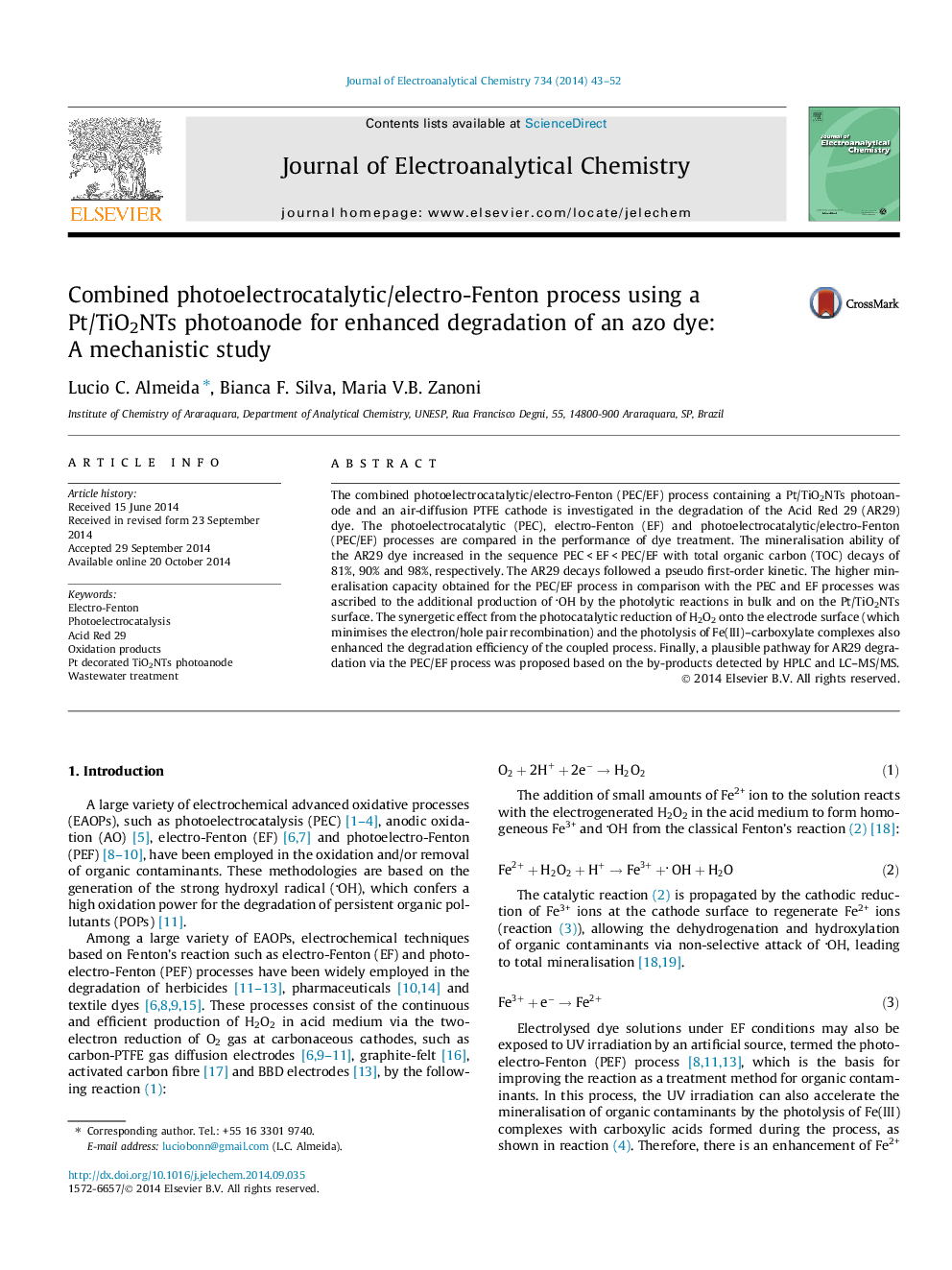| Article ID | Journal | Published Year | Pages | File Type |
|---|---|---|---|---|
| 218635 | Journal of Electroanalytical Chemistry | 2014 | 10 Pages |
•Total decolorization and 98% mineralisation of Acid Red 29 by coupled PEC/EF process.•Synergy between photoelectrocatalysis and electro-Fenton processes using a Pt decorated TiO2NTs photoanode.•Mineralisation ability increased in the sequence PEC < EF < PEC/EF.•15 aromatic and 2 carboxylic acids were detected as oxidation byproducts.•Degradation pathway of an azo dye by coupled PEC/EF process was proposed.
The combined photoelectrocatalytic/electro-Fenton (PEC/EF) process containing a Pt/TiO2NTs photoanode and an air-diffusion PTFE cathode is investigated in the degradation of the Acid Red 29 (AR29) dye. The photoelectrocatalytic (PEC), electro-Fenton (EF) and photoelectrocatalytic/electro-Fenton (PEC/EF) processes are compared in the performance of dye treatment. The mineralisation ability of the AR29 dye increased in the sequence PEC < EF < PEC/EF with total organic carbon (TOC) decays of 81%, 90% and 98%, respectively. The AR29 decays followed a pseudo first-order kinetic. The higher mineralisation capacity obtained for the PEC/EF process in comparison with the PEC and EF processes was ascribed to the additional production of OH by the photolytic reactions in bulk and on the Pt/TiO2NTs surface. The synergetic effect from the photocatalytic reduction of H2O2 onto the electrode surface (which minimises the electron/hole pair recombination) and the photolysis of Fe(III)–carboxylate complexes also enhanced the degradation efficiency of the coupled process. Finally, a plausible pathway for AR29 degradation via the PEC/EF process was proposed based on the by-products detected by HPLC and LC–MS/MS.
Graphical abstractFigure optionsDownload full-size imageDownload as PowerPoint slide
